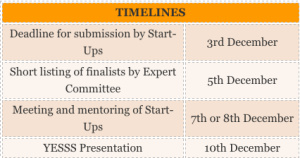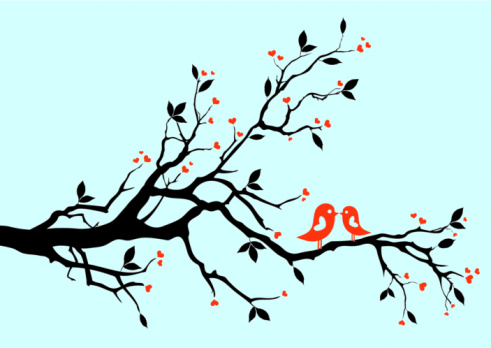Valuations often have seemed to be a “Black Art”, but they seem to be crucial in determining your strategy for outside investment!
Are they really? How is the early stage entrepreneur going to decide what is reasonable?
Some other questions that routinely come up in the mind of entrepreneurs:
1. How does the process of creating value effect me, my co-founders, my team & investors?
2. How do I maximize value for everyone?
3. How do I get the best valuation in case of an exit?
Entrepreneurs need to understand how money works and see the world from the investors world.
One of the area VCs in the US once described to me this scene sometime back, just after their firm had decided to invest in the start-up:
“There was a lot of interest in this company, and the founders had a fair amount of leverage. They used every ounce of it to extract a higher valuation,” he said. We kept saying that our firm would bring a lot more to the table than money, and that the mentoring, strategic advice, network resources, and political capital we could offer were almost unmatched.”
“The founders however set all that aside and made it about the money. It left a bad taste in our mouth. The deal was still worth doing—barely. But we have less of an equity stake in the company than we would ordinarily want, and given all the other portfolio companies that need my attention, I don’t feel any obligation or desire to give these guys additional assistance.”
The point is that the founders undervalued the non monetary value resources the VC firm had to offer, or they assumed that mentoring and strategic support would inevitably be available from the firm. Given that the negotiation for money and term-sheets is a high stakes exercise with various emotions and personalities
present in the mix, one should not forget that the document at the end lays out how much equity and control a VC will have in return for its cash is all about assigning rights, carving out protections, and haggling over claims to future returns.
So these negotiations are fundamentally about picking the right long-term partner and forging a relationship that can survive the inevitable disappointments, resolve the unforeseen conflicts, and monetize the mutually earned successes to come.
Now as a management consultant, I have tried to put these dynamics into some of the mistakes and solutions of how to avoid them in this blog.
At the end of the day, term sheets can be difficult to understand, and you may need help determining what the various provisions—liquidation preference, anti-dilution protection, pay to play, drag along rights, vesting schedules, no-shop clauses, and so on—imply for your current and future rights and obligations. At the very least, you should contact other companies in the VC firm’s portfolio to find out what was negotiable, why they made the choices they did, and what terms were the most consequential in the months and years after the deal.
So try to check out various VCs and see who you can work with, who has done investments in your space (target market you address) and what it has been for others to work with them.
“Remember you are looking for a partner for the long term and people who you work with will matter in terms of bringing value to your startup especially
the non monetary type!”
So here are some things to consider –
Understand your leverage
One of the thing is the more alternatives you have which means number of other VCs who are interested in your startup, it gives your more leverage. Try to use this to fight for the terms that are important for you. Sometimes one common problem is running out of cash since its hard to forecast the burn rate, and too little willingness to give up equity. As a result, you may fail to take in enough money during early rounds of funding. So look for someone who is willing to fund subsequent rounds or offer bridge loans without significant dilution of founder equity. Its better to negotiate this during the first round of financing when you have numerous alternatives and could command a better price. Many founders have discovered that doing a slightly bigger first round than seems necessary—or perhaps negotiating an acceptable formula for future bridge loans at the outset—can pay off in the
long run: It’s bad when you have few options, but considerably worse when you are running out of options and out of money!
Its okay to look at the long-term goals of the VC partner and take the time to understand what the other side cares about and hope for from their investment which includes accepting money in installments tied to milestones with no dilution in equity.
“So don’t just focus only on your own options.
Understanding the other party’s interests can give you leverage”.
Strive to maximize thrust for win-win situation
Imagine you are the verge of closing a big financing round at the end of the month. When you pitched
last month, the business was gaining momentum and you are on target for all your financial projections. Since then, a major customer deal you were counting on falls apart, and a key employee is on the verge of leaving. Question would be if you would have any legal obligation to reveal this situation, probably not, but imagine you picked up the phone and revealed it. Maybe you think they may re-negotiate the terms of the deal. But most often than not, VCs would reward you for your honesty since they would like to put a premium on your trust! They would value your upfront gesture of delivering bad news as you would deliver good news to them!
Another thing would be around terms, to comparison shop, and to use whatever leverage you have to renegotiate the deal. Its all okay as VCs expect you to ask for better terms, but not after you have given your word on an agreement. The VC world is small and they all keep cross checking on each others deal flows all the time.
“In VC relationships, as in any long-term partnership,
It’s much easier to build trust than to rebuild it.”
Focus on value and not valuations
If you’re selling your house, for instance, you might not even meet the buyers, and despite issues such as inspections, financing contingencies, and the closing date, the selling price is far and away the top priority. In this case focusing on a single, top-line number sometimes makes sense!
But in case of accepting someone’s money at a startup, the signed contract is the beginning of the relationship, so its a mistake to focus too narrowly on price and not enough on drivers of long-term value. Its like when negotiating a job offer, for example, people tend to obsess over the starting compensation, but factors such as geography, responsibilities, prospects for learning and advancement, and even length of commute can have a greater impact on their enduring happiness and success.
More than one VC has identified this shortsighted emphasis as founders’ biggest mistake.
“Entrepreneurs focus too much on valuation and not enough on control,” one VC told me. “It’s amazing how much control founders are willing to sacrifice in order to obtain a $4 million valuation instead of $3.5 million. These numbers don’t matter much in the long run, but the impact of diminished control can last forever.” The tendency is especially remarkable when you consider the passion most founders have for what they are trying to create, for their company’s mission, and for their vision of its future. Once founders have sacrificed board control or ceded voting rights on too broad a category of decisions, those decisions are, of course, technically out of their hands. Most VCs are very reluctant to use their control rights to contravene the wishes and objectives of management, but if conflict or a breakdown in trust between management and the board occurs, founders may find themselves severely constrained, if not replaced.None of this means you should ignore valuation—it’s an important consideration. But it’s a mistake to confuse it with value, given that most founders also care a lot about factors such as their role, prestige, self-identity, and autonomy.
“To maximize valuation without regard for non-financial considerations
is to sign something of a Faustian bargain.”
Strive for Understanding not Conflict
Even when control is not the concern, you ought to pay close attention to terms other than valuation; there are additional provisions that can have a huge impact on how much money you’ll eventually see. And if you look at them carefully, the terms a VC firm proposes can help you understand its unspoken concerns and assessments of your start-up’s future.
Well as in any relationship you need to look well beyond the contract and far beyond today. The lessons offered above are targeted toward those who are striving to create strong partnerships with VCs—but they are relevant for anyone negotiating in a world where a signed contract is not the end but merely the beginning.
So folks go develop products & solutions and please don’t forget to connect your wares to a customer persona and a pain-point they may have to resolve and rest will follow!
I will do more posts on understanding terms like liquidation preference vs. participation for example in term-sheets from the perspective of an entrepreneur.







